The Blade Runner Films – Have They Earned Their Cult-Classic Status?
They’re literally a franchise, but what really makes us wonder is what makes these movies tick with audiences? Tapping into the original neo-noir science fiction vibes from the Philip K. Dick novel “Do Androids Dream of Electric Sheep?” published in 1968 has worked wonders for this story and its manifold characters.
Not only has the character of Rick Deckard made it onto stage-play and radio-serial mediums, but he has also enjoyed a prime fan-driven status in comic books and of course films. The 1982 title directed by the clever Ridley Scott may have had a rocky start, but the movie gradually acquired cult classic fame over the years.
Anyone who loves Harrison Ford (of “Indiana Jones” mega-fame) will adore what he brought to the character in this first film adaptation of the original “Blade Runner” story.
The Birth of Cyberpunk – Sources & Inspiration
The very idea of ‘cyberpunk’ was inspired by books and movies like “Blade Runner”. The year 2017 gave us another addition to the Runner family, namely “Blade Runner 2049”. It starred Ryan Gosling (“First Man” | “La La Land” | “Crazy, Stupid, Love”), Robin Wright (“House Of Cards” | “Wonder Woman 1984” | “The Girl with the Dragon Tattoo”), Dave Bautista (“Guardians of the Galaxy” | “Dune” | “Army of the Dead”), Jared Leto (“Zack Snyder’s Justice League” | “Morbius” | “Suicide Squad”), and Harrison Ford (duh).
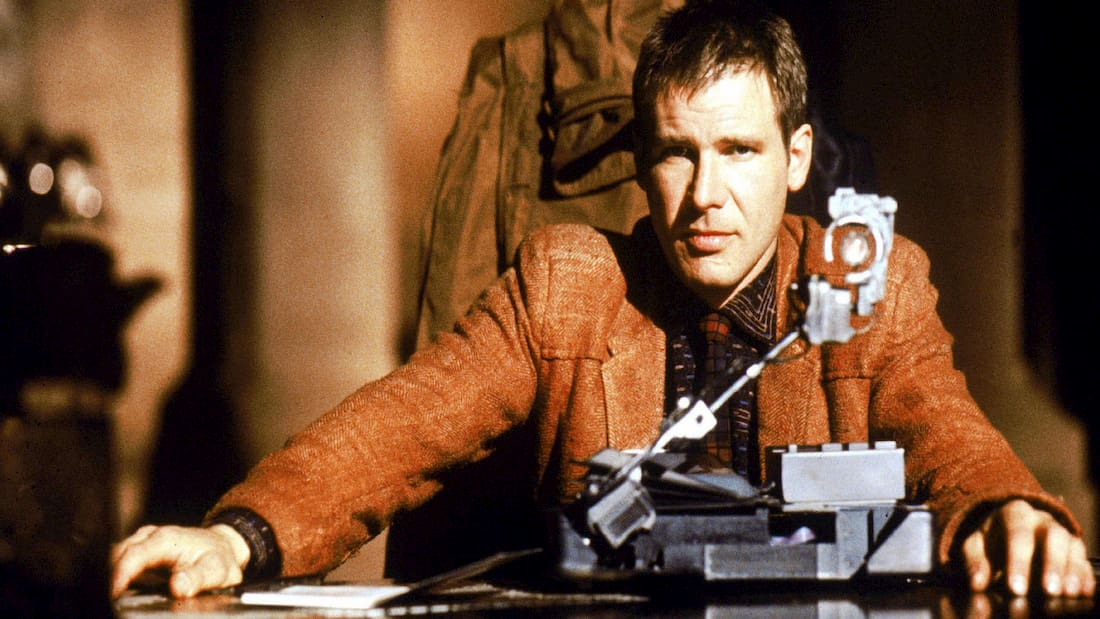
Denis Villeneuve directed this ‘work of art’, and we can honestly say Ford’s re-entry gave us goosebumps. This movie, along with the roster (listed below) of creative products in this outstanding franchise, has redefined how we view Cyberpunk, and what we have come to expect from this particular genre.
Blade Runner Books:-
1. Blade Runner: A Story of the Future (1982) by Les Martin
2. Blade Runner 2: The Edge of Human (1995) by K.W.Jeter
3. Blade Runner 3: Replicant Night (1996) by K.W.Jeter
4. Blade Runner 4: Eye and Talon (2000) by K.W.Jeter
Blade Runner Novel & Comics (or Graphic Novels):-
1. A Marvel Comics Super Special: Blade Runner (1982)
2. Do Androids Dream of Electric Sheep? (2009 Novel) [Main Source Material]
3. Dust to Dust (2010 Comic)
4. Blade Runner 2019 (2019 Comic)
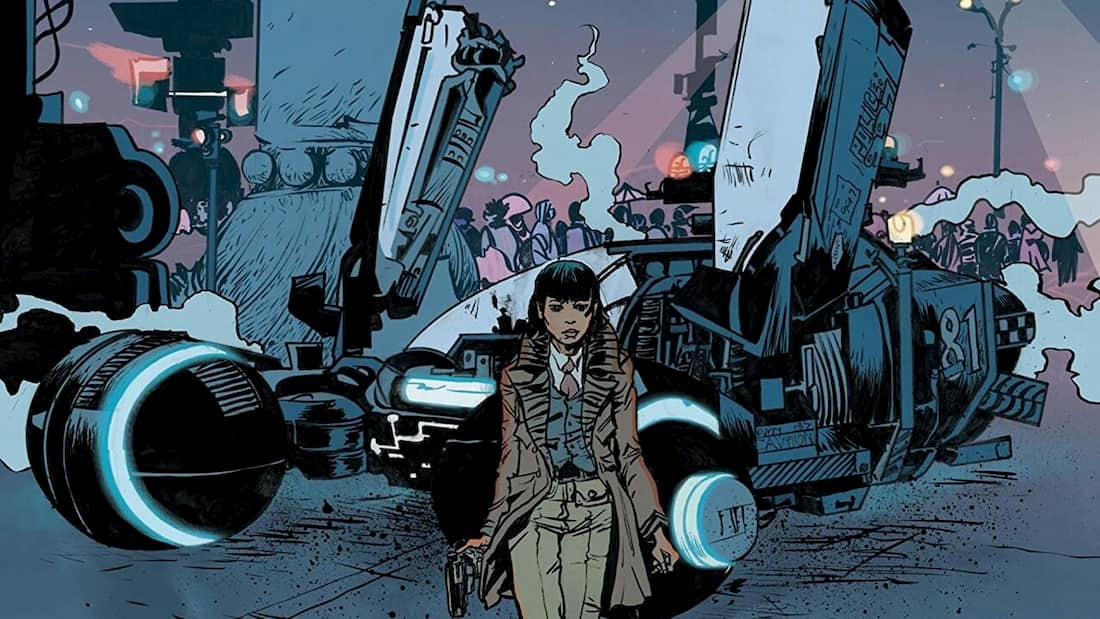
Blade Runner Short Films:-
1. 2036: Nexus Dawn (2017)
2. 2048: Nowhere to Run (2017)
3. Blade Runner Black Out 2022 (2017)
Blade Runner Video Games:-
1. Blade Runner (1985)
2. Blade Runner (1997)
3. Blade Runner: Revelations (2018)
It’s Going To Be Quite The Show
We can all look forward to a Blade Runner series coming in 2021. The announcement for “Blade Runner: Black Lotus” was made in 2018, which seems like a lifetime ago (thank you, Wuhan virus pandemic). Fans are waiting to partake of yet another gorgeously dark plotline set in the Blade Runner universe.
Created in partnership with Alcon Television Group, this one is going to be an anime series with Shinichirō Watanabe playing the role of creative producer. It is not going to be shot in native English, so look forward to some anime-style dubbed versions that will stream on Crunchyroll and air on AdultSwim.
The story takes place ten years after the events that took place in the anime short “Blade Runner Black Out 2022”. This will place the series’ plot in the year 2032. Fans have also been promised the inclusion of ‘familiar characters’, so keep calm and Runner on.
The Japanese animation studio Sola Digital Arts looks all set to eat a slice of the Blade Runner pie with “Black Lotus”. And with most things Internet, most of us are going to enjoy watching them a feast.
Original Story Elements
The movies captured some of the best ideas from the source material. Fans of this franchise will be familiar with words like ‘Replicants’, ‘Spinners’, and the dreaded ‘Voight-Kampff machine’. If you’re new, let’s help you brush up on your “Blade Runner” jargon. You’re going to need it, seeing as how you have read this far and are probably interested in giving these movies a looksie.
1. Replicants
These bio-engineered androids or robots are real-life replications of human beings, only these are superior to us in all the ways that matter: agility, strength, and intelligence. There are different models that come packing their own capabilities.
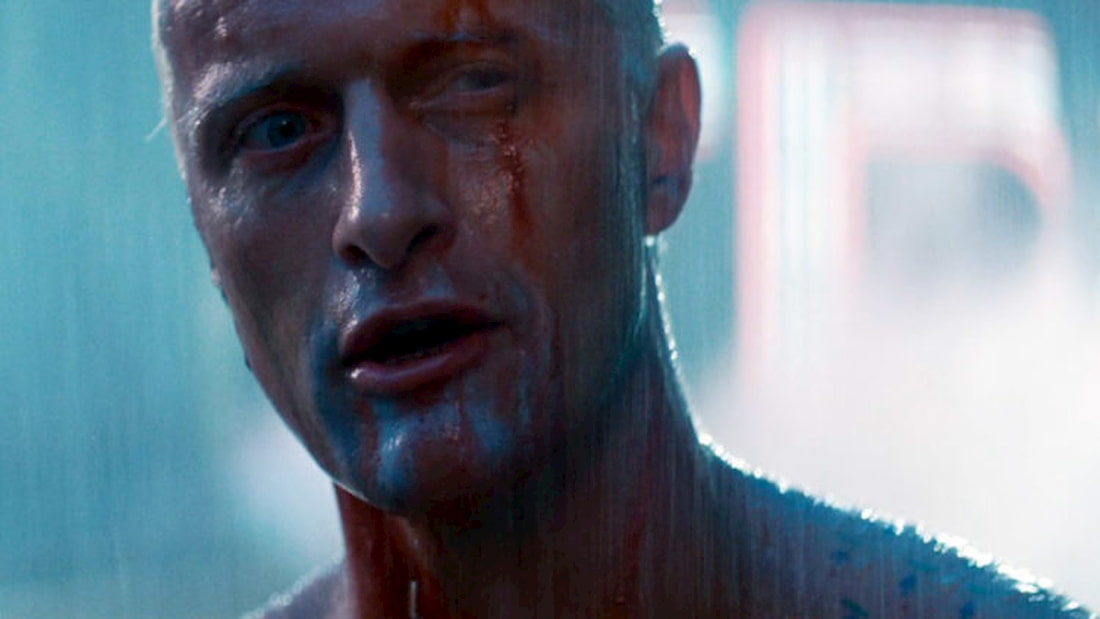
Replicants are identical to humans, meaning the only way you’re going to be able to figure one out is through the Voight-Kampff machine. We’ll discuss more on this soon. Just know that it detects emotional variations that help interrogators distinguish between human and replicant.
Those who created these entities also wove in a safety mechanism that is essentially a reduced lifespan (up to four years in total), specifically for the Nexus 6 replicants. This ensures that replicants do not develop empathy (i.e., empathic cognition), which will in turn make them immune to the Voight-Kampff tests.
The word ‘replicant’ was originally ‘andy’ (short for ‘android’) in the novel “Do Androids Dream of Electric Sheep?” Let’s just say Ridley Scott took a more direct scientific approach when it came to adopting the word ‘replicant’, specifically based on ‘cell replication’.
2. Spinners
Flying cars feature strongly in the cyberpunk realm of Blade Runner, so it comes as no surprise to see these ‘spinners’ whizzing around in the movies. They may be a nickname, but the fact that the name can be found on police cars tells us a lot about how this fictional world’s people and culture took to the word and stuck to it.
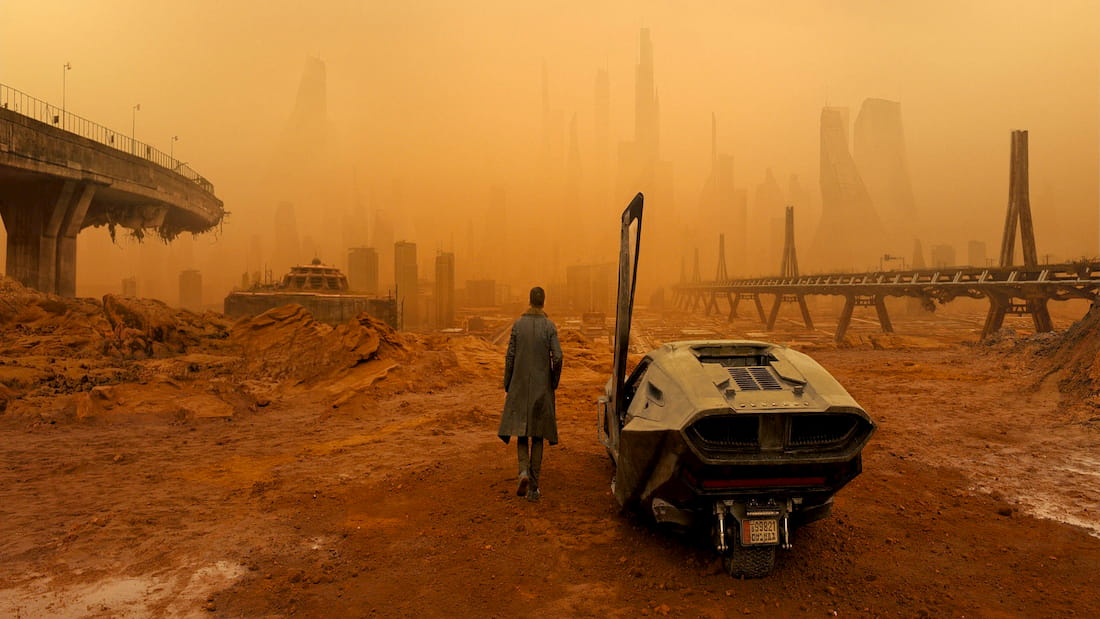
Spinners can take to the road as well as the air. The exact jet-propulsion technology that drives (pun unintended) the Spinners has not been detailed, but they have proven capable of vertical take-offs and landings.
Wealthy entrepreneurs and police use these vehicles in the Blade Runner franchise. Syd Mead’s design has inspired similar vehicles in other popular franchises, from “Star Wars” and “Back To The Future” to “The Fifth Element”.
3. Voight-Kampff Machine
Essentially an interrogation tool, Blade Runners (as characters) use these machines as one would polygraphs. What are they trying to determine? If the person being interrogated is really a human being or a replicant.
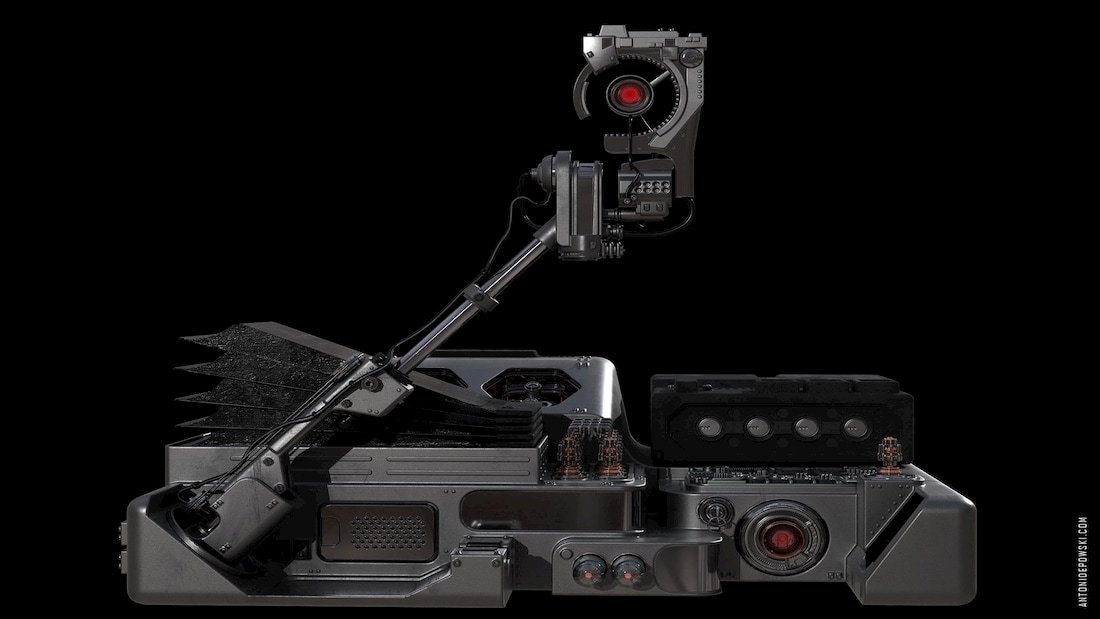
The machine takes into consideration the following: heart rate, eye movement, respiration, and sundry empathic responses. It uses these physical inputs to decide if the person connected to the machine is feeling genuine empathy, like a bona fide human being.
In the movie we see Deckard telling Tyrell something along the lines of ‘it usually takes 20 to 30 cross-referenced questions to distinguish a replicant’. The book said it different, it held that only six or seven queries were sufficient. However, when it came to the replicant Rachael in the movie, we saw Deckard delving through a hundred questions before realizing that the android being interrogated wasn’t human.
The 1982 Film Is Definitely A Classic
Albeit a loose adaptation, “Blade Runner” (1982) was remarkably memorable. For all its CGI greatness, the 2017 remake sadly failed to capture the same level of charm, depth, and cyberpunk appeal.
That’s not to say the 2017 released “Blade Runner” movie was bad, far from it. Gosling and Ford gave us some interesting performances in that one. But imagine a dystopian Los Angeles set in 2019, in a movie that was taken in ’82, and starred Harrison Ford in the lead role. Now that’s a classic, especially by today’s standards.
The Tyrell Corporation gave us some serious corporate mal-vibes, and we got to learn of off-world colonies that could (we’re guessing) be a central focus in the 2021 anime series “Black Lotus”.
Replicants may not be human but they do behave human enough. We see a lot of that in the way they try to escape Earth, get as far from their bondage, and seek freedom in the true sense of the word. Despite knowing they are androids, you can’t help but sympathize and relate to this need.
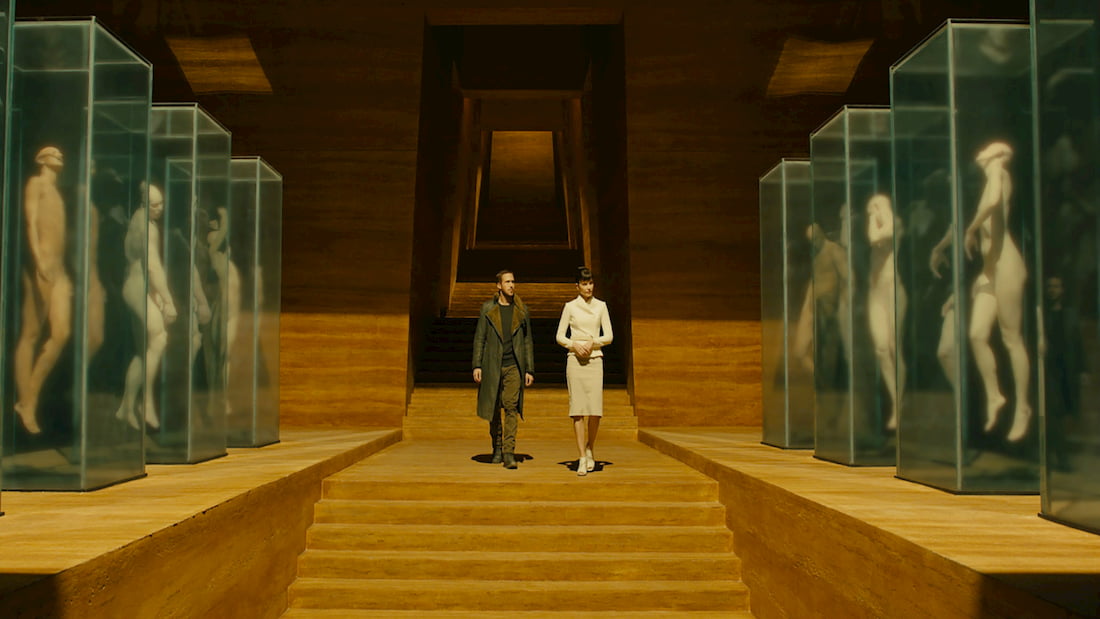
Our so-called blade runners are not technically the good guys. They hunt down any replicants that have escaped and ‘retire’ them. Invested with the power to do so, these special police operatives or ‘blade runners’ seem to be the last line of defense between a human-centric future and one where the difference between robot and person becomes well-nigh impossible to determine.
Setting Standards
Excellent performances from Harrison Ford, Rutger Hauer, Sean Young, and Edward James Olmos made the 1982 movie a trend-setter when it came to all things Cyberpunk and neo-noir-sci-fi. The film’s production design was ahead of its time. It gave us a peek into a ‘retrofitted future’ that most audiences never dreamed they would see on the screen until a few decades later.
Soundtrack composition by Vangelis only added to our reasons to fall in love with “Blade Runner” (1982). The Greek musician received a ‘best original score’ nod at both the Golden Globes and BAFTAs during the 1983 awards season. His music can best be described as an ode to Synthwave. 1982 “Blade Runner” even won the prestigious ‘Hugo Award for Best Dramatic Presentation’.
Critics have hailed it as one of the ‘all-time best science fiction films’. And guess who deemed the movie “culturally, historically, or aesthetically significant”? None other than the Library of Congress that went on to include the movie in the United States National Film Registry.
There may well be a third “Blade Runner” movie to follow up on the events that transpired in “Blade Runner 2049”, but nothing has yet been confirmed. In the meantime, we have “Blade Runner Black Lotus” to look forward to coming in 2021.
